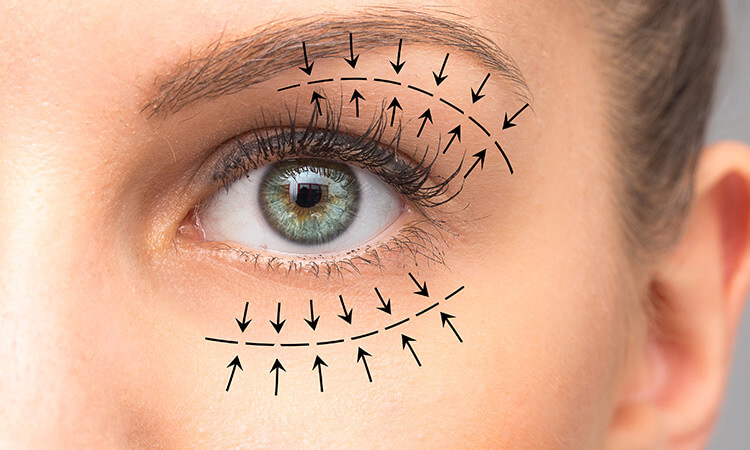
Blepharoplasty or eyelid surgery is a surgical procedure that aims at correcting the appearance of the upper and lower eyelids that may have excess fat and/or skin. As with any surgery requiring incisions, postoperative scars are inevitable.
Let’s discover the particularities of scars associated with this type of cosmetic surgery :
Ths scars of the upper blepharoplasty
During upper eyelid blepharoplasty, the surgeon makes an incision in the upper eyelid fold which is naturally located halfway between the mobile and fixed parts of the upper eyelid.
Although upper eyelid surgery always results in scars, in the vast majority of cases they are invisible to the patient thanks to the great healing power of the eyelids. Moreover, the scars of upper blepharoplasty are naturally hidden in the upper eyelid fold and extend almost invisibly to the oblique wrinkles of the corner of the eye or crow’s feet.
In addition, the scars are completely invisible when the eyelid is in the open position. However, as with any surgery involving skin incisions, the final appearance of the scars remains unpredictable even though medical techniques are becoming more and more sophisticated and controlled.
Generally speaking, the scars can be masked with makeup about 2 weeks after the upper blepharoplasty procedure. Indeed, the postoperative scars are mainly visible on the external parts, although they do not cause any discomfort for the patient.
In addition, it is essential for the patient to protect his or her scars from natural and/or artificial UV rays with a sunscreen to avoid pigmentation problems that could compromise the final appearance of the scars. Finally, the result and the final appearance of the scars can be appreciated after about 1 year of the operation.
The scars of the lower blepharoplasty
During lower eyelid blepharoplasty, the surgeon makes an incision in the lower eyelid approximately 1 to 2 mm below the eyelashes. This incision extends from the inner corner of the eye or tear duct opening to the outer tip of the eyelid. In the case where the surgeon also needs to treat a problem of bags under the eyes without the need to remove excess skin, a trans-conjunctival incision is made inside the lower eyelid at the level of the conjunctiva.
As with upper eyelid surgery, lower eyelid surgery systematically results in scars that are in most cases invisible to the patient. Indeed, these scars are naturally hidden under the eyelashes and at the level of a wrinkle on the outer edge of the eye. In the case of a transconjunctival incision, the scar is also completely invisible because it is hidden inside the eyelid on the inner side.
As with upper blepharoplasty, the scars can be concealed with makeup approximately 2 weeks after the procedure. In addition, the scars must also be protected from UV rays with a sunscreen or sunglasses to avoid pigmentation problems. Finally, the final appearance of the scars is obtained about 1 year after the lower blepharoplasty procedure.

